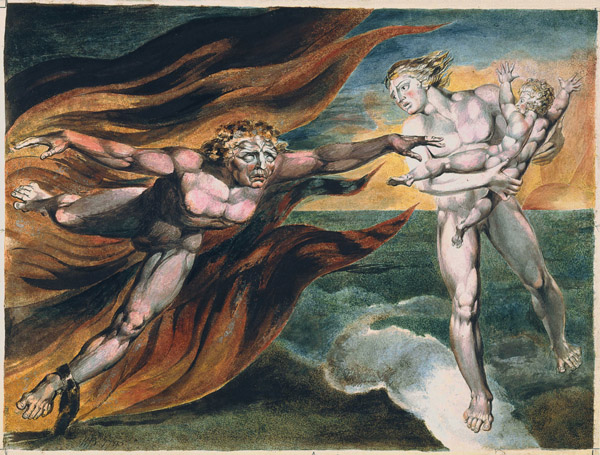 |
| Library of Congress Look for better image at Works |
The voice of the Devil All Bibles or sacred codes. have been the causes of the following Errors.
1. That Man has two real existing principles Viz: a Body & a Soul.2. That Energy. calld Evil. is alone from the Body. & that Reason. calld Good. is alone from the Soul. 3. That God will torment Man in Eternity for following his Energies. But the following Contraries to these are True 1 Man has no Body distinct from his Soul for that calld Body is a portion of Soul discernd by the five Senses. the chief inlets of Soul in this age 2. Energy is the only life and is from the Body and Reason is the bound or outward circumference of Energy. 3 Energy is Eternal Delight
With the better image what Erdman says on page 101 becomes obvious: "Flanking the Voice of the Devil are three cloaked angelic trumpeters..." We note three errors: 1. Body and Soul are separate. 2. Energy is Evil and from the Body and Reason (Good) is from the Soul. Following the line 'from the Souls' Erdman saw 5 'sporting' figures (the senses of
course and three 'Monkeys' representing Reason.) (If you can see that your eyesight is better than mine.) At the bottom picture a naked woman with a small child is moving toward the man; Erdman sees this as a way of expressing the "jealous separation of Soul and Body". They are separated by the manacle on the right ankle of the man.3. That God will torment Man for following his Energies.
In The Unholy Bible (page 61) the young child is "Imagination, the treasured
possession of the feminine spirit of energy." She keeps him out of the reach of
the man.
The image here is reminiscent of Blake's picture, The Good and Evil Angels:
 |
| wiki common |
No comments:
Post a Comment